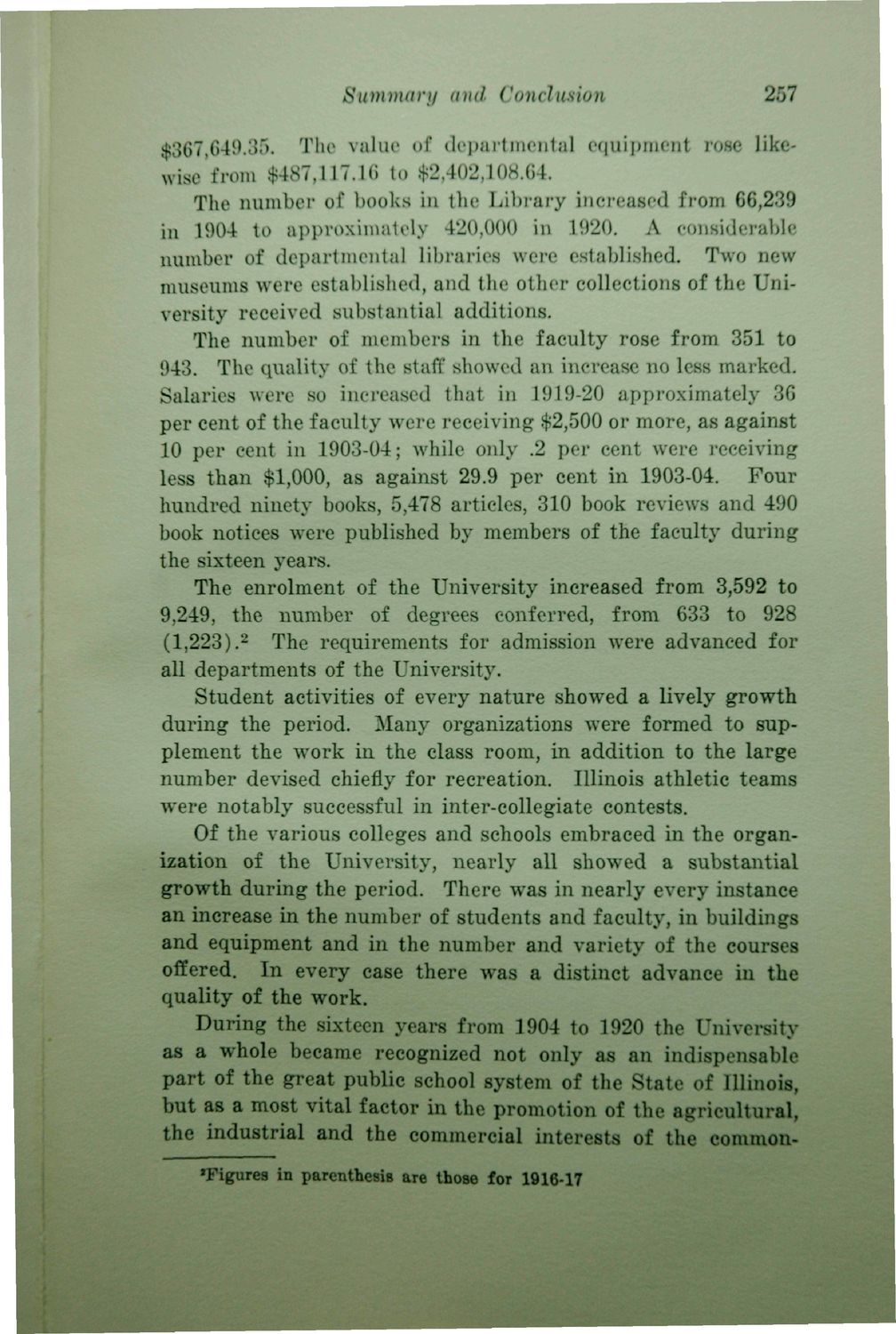| |
| |
Caption: Book - 16 Years (Edmund James)
This is a reduced-resolution page image for fast online browsing.

EXTRACTED TEXT FROM PAGE:
Summary and Conclusion 257 $367,649.35. The value of departmental equipment rose likewise from $487,117.16 to $2,402,108.64. The number of books in the Library increased from 66,239 in 1904 to approximately 420,000 in 1920. A considerable number of departmental libraries were established. Two new museums were established, and the other collections of the University received substantial additions* The number of members in the faculty rose from 351 to 943. The quality of the staff showed an increase no less marked. Salaries were so increased that in 1919-20 approximately 36 per cent of the faculty were receiving $2,500 or more, as against 10 per cent in 1903-04; while only .2 per cent were receiving less than $1,000, as against 29.9 per cent in 1903-04. Pour hundred ninety books, 5,478 articles, 310 book reviews and 490 book notices were published by members of the faculty during the sixteen years. The enrolment of the University increased from 3,592 to 9,249, the number of degrees conferred, from 633 to 928 (1,223).2 The requirements for admission were advanced for all departments of the University. Student activities of every nature showed a lively growth during the period. Many organizations were formed to supplement the work in the class room, in addition to the large number devised chiefly for recreation. Illinois athletic teams were notably successful in inter-collegiate contests. Of the various colleges and schools embraced in the organization of the University, nearly all showed a substantial growth during the period. There was in nearly every instance an increase in the number of students and faculty, in buildings and equipment and in the number and variety of the courses offered. In every case there was a distinct advance in the quality of the work. During the sixteen years from 1904 to 1920 the University as a whole became recognized not only as an indispensable part of the great public school system of the State of Illinois, but as a most vital factor in the promotion of the agricultural, the industrial and the commercial interests of the common-Figures in parenthesis are those for 1916*17
| |